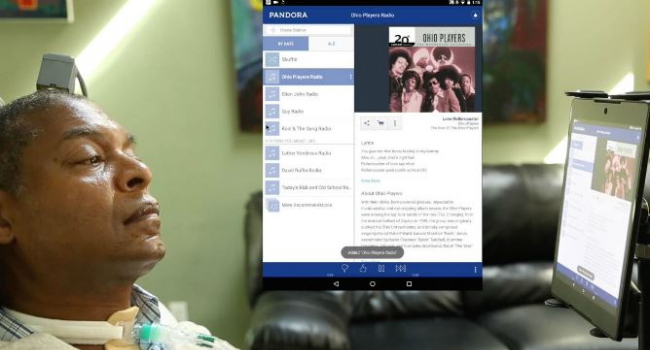Cortical control of a tablet computer by people with paralysis
 20:00 24 November, 2018
20:00 24 November, 2018General-purpose computers have become ubiquitous and important for everyday life, but they are difficult for people with paralysis to use. Specialized software and personalized input devices can improve access, but often provide only limited functionality. In this study, three research participants with tetraplegia who had multielectrode arrays implanted in motor cortex as part of the BrainGate2 clinical trial used an intracortical brain-computer interface (iBCI) to control an unmodified commercial tablet computer. Neural activity was decoded in real time as a point-and-click wireless Bluetooth mouse, allowing participants to use common and recreational applications (web browsing, email, chatting, playing music on a piano application, sending text messages, etc.). Two of the participants also used the iBCI to “chat” with each other in real time. This study demonstrates, for the first time, high-performance iBCI control of an unmodified, commercially available, general-purpose mobile computing device by people with tetraplegia.
Millions of people have some form of paralysis, which can limit the ability to perform activities of daily living . In conditions such as amyotrophic lateral sclerosis (ALS), the disease may eventually impede both speech and other forms of effective communication . The field of assistive technology aims to improve the functional capabilities of people with disabilities . Augmentative and alternative communication (AAC) interventions are standard-of-care for people with complex communication impairments . An emerging input method for AAC or other technologies is a brain-computer interface (BCI), which translates brain activity into useful control signals for computing devices. Using BCIs based on electroencephalography (EEG, which records signals from the scalp) or electrocorticography , previous work has shown control of spelling, web browsing, games, and painting; but not general control of a computing device such as a commercial tablet. Similarly, intracortical BCIs have demonstrated compelling proofs-of-principle in both preclinical and clinical trials but, to date, there has been no demonstration of high-performance control of familiar applications on unmodified consumer computing devices. In this study, we tested the feasibility of using an iBCI enabled by advanced neural decoders , building primarily on a recent prior report to provide “point-and-click” control of a commercial tablet computer by three people with limited arm and hand movement.
Full article: PLOS ONE